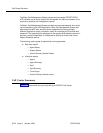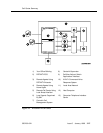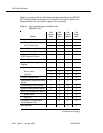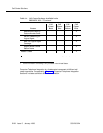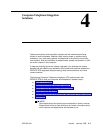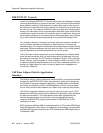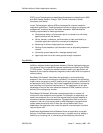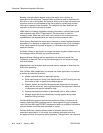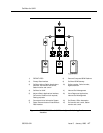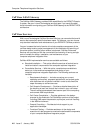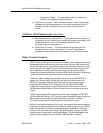
CallVisor Adjunct Switch Application Interface
Issue 5 January 1998
4-3555-230-024
AT&T/Lucent Technologies has established development partnerships for ASAI
with IBM, Hewlett-Packard, Dialogic, GIS, Tandem Computers, Stratus
Computers, and Novell.
Lucent Technologies is offering ASAI to meet specific customer needs for
integration applications. These applications include incoming and outgoing call
management, customer service, and office automation. ASAI satisfies the
following requirements for these applications:
■ Simultaneous delivery of information about a customer to a call center
agent’s terminal with call delivery
■ Set up, transfer, conference, and disconnect of calls controlled by a
computer application rather than manually at a telephone
■ Monitoring of calls arriving at particular extensions
■ Routing of calls based on call information such as originating telephone
number
■ Controlling system features like “message waiting lamp”
■ Agent login and out-of-call center groups through computers
Capabilities
CallVisor Adjunct Switch Application Interface. Defines eight application ser-
vice elements that incorporate 48 separate capabilities provided by the DEFIN-
ITY ECS system. The particular elements that are used in your application will
depend on the computer-telephone integration product with which the system is
communicating.
First Party Call Control. Used when the application is a communicating
endpoint in the call to be monitored or controlled. For example, the application
might involve a program on one PC making a call to a program on a second PC.
An application using First Party Call Control capabilities is limited to monitoring
and controlling only calls that are directed to it. The application can still take
advantage of some of the more advanced features of ISDN, however, such as
delivery of the calling-party number.
Third Party Call Control. Allows the computer application to control call
functions for other endpoints on the system. For example, an application can
specify two endpoints for a call and then request that the system establish a
connection between those two endpoints. The application here is not a true
endpoint in the call; it has merely used an ASAI message to request that the
system make the call and notify it when the call has been made. Once
established, the application can control the specific communication functions
required by the call.
Notification Application Service Element. Allows an application to request
delivery of information about events occurring in a system, such as alerting a
station by an incoming call, or connecting or disconnecting from the call.




